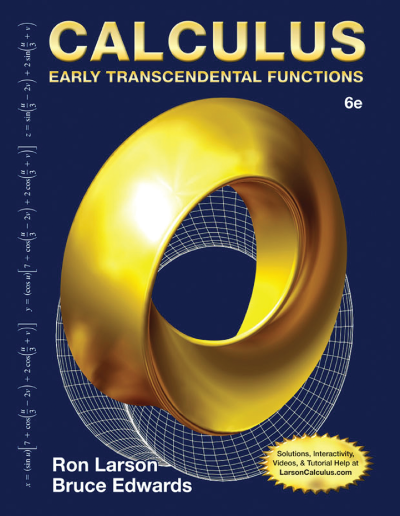Pierre Simon de Laplace
(1749 – 1827)
Pierre Simon de Laplace was born in the Normandy village of Beaumont-en-Auge, France on March 23, 1749. His biographers offer very different versions of his early life. Some suggest that Laplace was a peasant’s son whose education was funded by benevolent neighbors; others contend that his father was the prosperous owner of a small estate, and that Laplace’s close relations included a prominent surgeon and a priest.
Whatever the economic status of his parents, it is certain that Laplace, at the age of seven, was sent to a school administered by Benedictine monks. He left the school at the age of sixteen to enter the University of Caen. By this time, his mathematical genius was apparent.
While still an undergraduate, Laplace wrote a treatise on the calculus of finite differences that was published in a journal of which Lagrange was editor. Laplace left the university two to five years later (again, biographers differ), and shortly thereafter arrived in Paris.
Laplace immediately wrote to d’Alembert, who was at the time the most prominent mathematician in France. Laplace was puzzled, though undeterred, by d’Alembert’s failure to respond to his letter and the recommendations of his professors. Changing his tactics, Laplace wrote a brilliant paper on the general principles of mechanics, and sent it off to his prospective mentor. This time, d’Alembert took notice. He immediately invited Laplace to his home with the remark, “As you see, I pay little enough attention to recommendations; you had no need of them. You made your worth known; . . . my support is your due.” Soon thereafter, d’Alembert was able to secure for Laplace a coveted appointment as professor of mathematics at the École Militaire in Paris.
Laplace’s rise to prominence was meteoric. By 1773, his works on physics and mathematics had earned him an invitation to membership in the prestigious Académie Royale des Sciences.
Laplace’s first, and most enduring interest, was celestial mechanics, to which he had been drawn by his study of Newton’s Principia. Appalled by Newton’s suggestion that the movements of the planets were occasionally adjusted by divine intervention, Laplace set out to prove him wrong. Laplace succeeded, and the result was the five-volume masterwork, Mécanique céleste. Published over a twenty-six year period beginning in 1799, Mécanique céleste is a systemization of the gravitational studies of several generations of mathematicians. The work is marred by its author’s failure to credit his predecessors for their contributions, with the implication that their discoveries were entirely his own; nevertheless, the enormous quantity of original material was sufficient to earn Laplace the title, “the Newton of France.”
Among Laplace’s purely mathematical achievements was his Théorie analytique des probabilités, published in 1812. This volume, the culmination of forty years of research, is generally considered to be the greatest contribution to the theory of probability in the history of mathematics. Though once again Laplace borrowed liberally without acknowledging his sources, his own remarkable discoveries warrant its reputation as a masterpiece.
Laplace is noted for a talent of quite another nature, as well: he was able to ingratiate himself with whatever political party happened to be in power at the time. In the unsettled climate of post-revolutionary France, this was no mean trick. He won the favor of Napoleon and Louis XVIII alike; the former named him a count, and the latter, a marquis. While Laplace’s ability to forsake one allegiance for another at will may have been morally questionable, it was certainly useful. It spared him the fate of at least one of his colleagues, who remained true to his convictions but died while imprisoned.
Laplace died in Paris, France on March 5, 1827, just a few days before his seventy-eighth birthday.
Links
http://www-history.mcs.st-andrews.ac.uk/Biographies/Laplace.html
http://www.maths.tcd.ie/pub/HistMath/People/Laplace/RouseBall/RB_Laplace.html
References
- Ball, W. W. Rouse. A Short Account of the History of Mathematics. 1908. Reprint. New York: Dover Publications, Inc., 1960.
- Burton, David M. The History of Mathematics. 2d ed. Dubuque, IA: Wm. C. Brown Publishers, 1988.
- Eves, Howard. An Introduction to the History of Mathematics. 6th ed. Fort Worth: Saunders College Publishing, 1992.
- Gillispie, Charles Coulston, ed. Dictionary of Scientific Biography. Vol. XV. New York: Charles Scribner’s Sons, 1978.
- Newman, James R. “Laplace.” In Mathematics in the Modern World, edited by Morris Kline, 44–48. San Francisco: W. H. Freeman and Company, 1968.
- Simmons, George F. Calculus Gems: Brief Lives and Memorable Mathematics. New York: McGraw-Hill, Inc., 1992.
- Struik, Dirk J. A Concise History of Mathematics. New York: Dover Publications, Inc., 1987.











